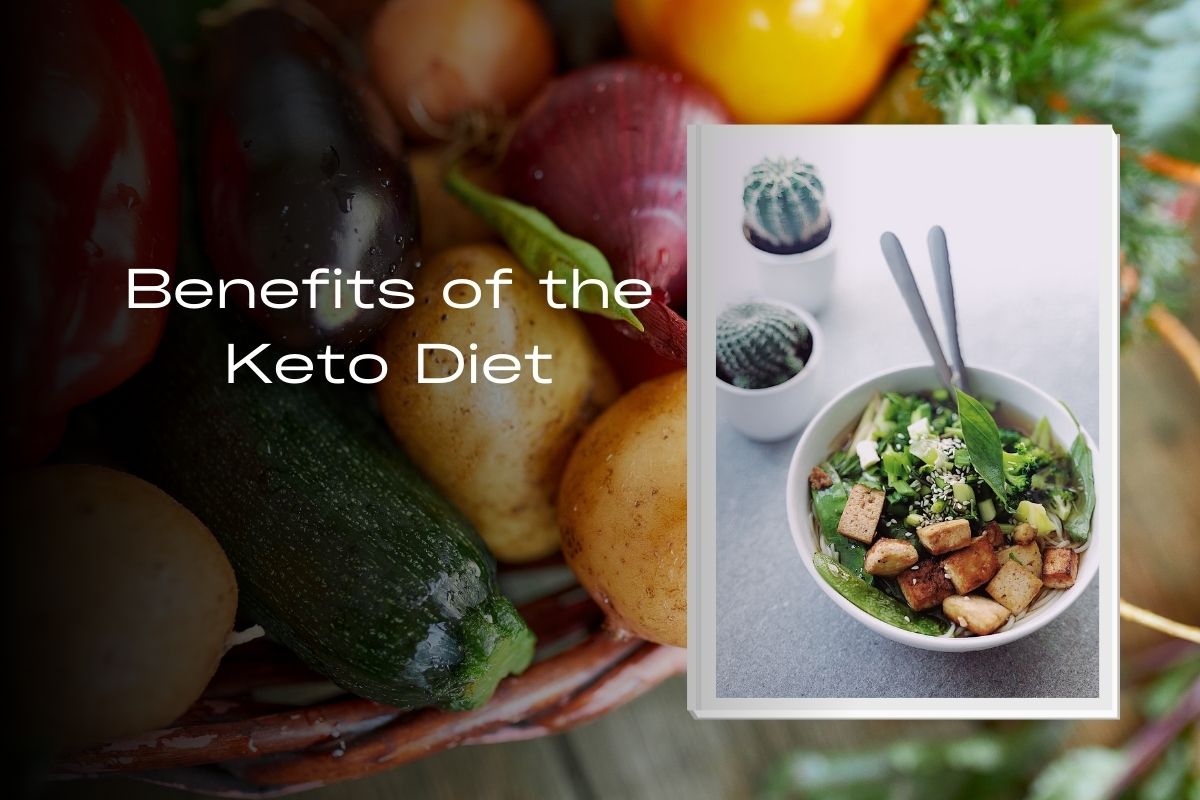Keto Diet: How to Achieve Rapid Weight Loss Safely
Table of Contents
ToggleIntroduction to the Keto Diet
The ketogenic diet, often referred to as the keto diet, is a low-carb, high-fat eating plan that has gained significant popularity for its potential to promote rapid weight loss. By drastically reducing carbohydrate intake and replacing it with fat, your body enters a metabolic state called ketosis. In ketosis, your body becomes incredibly efficient at burning fat for energy. This article will guide you through the essentials of the keto diet and how to achieve rapid weight loss safely.
Understanding Ketosis
Ketosis is a natural metabolic state in which your body uses fat rather than carbohydrates as its primary energy source. When you consume fewer carbs, your body starts breaking down fats into ketones, which are then used for fuel. This shift in metabolism can lead to significant weight loss, improved mental clarity, and increased energy levels.
Benefits of the Keto Diet
- Rapid Weight Loss: The keto diet can lead to rapid weight loss due to the reduction in carbs and the increase in fat burning.
- Appetite Control: Ketones suppress ghrelin (the hunger hormone), making you feel less hungry.
- Improved Blood Sugar Levels: By cutting carbs, you can stabilize blood sugar levels, which is beneficial for those with type 2 diabetes.
- Enhanced Mental Focus: Ketones are a potent fuel source for the brain, leading to improved cognitive function.
- Calculate Your Macros: To get into ketosis, you need to consume the right balance of macronutrients. Typically, this means 70-75% of your calories should come from fat, 20-25% from protein, and 5-10% from carbs.
- Choose High-Quality Fats: opt for healthy fats like avocados, olive oil, coconut oil, and fatty fish. Avoid trans fats and highly processed oils.
- Limit Carbs: Aim to consume less than 20-50 grams of net carbs per day. Focus on non-starchy vegetables, nuts, and seeds.
- Stay Hydrated: Drink plenty of water to stay hydrated and help your body flush out toxins.
- Monitor Your Progress: Keep track of your food intake, ketone levels, and weight loss progress to stay on track and make adjustments as needed.
Foods to Eat and Avoid on Keto
Foods to Eat:
- Meats: Beef, pork, lamb, poultry, and fatty fish.
- Low-Carb Vegetables: Leafy greens, broccoli, cauliflower, and zucchini.
- Dairy: High-fat dairy products like cheese, butter, and cream.
- Nuts and Seeds: Almonds, chia seeds, flaxseeds, and walnuts.
- Healthy Oils: Olive oil, coconut oil, and avocado oil.
Foods to Avoid:
- Sugary Foods: Soda, candy, cakes, and ice cream.
- Grains and Starches: Bread, pasta, rice, and cereal.
- Fruit: Most fruits are high in carbs except for small portions of berries.
- Legumes: Beans, lentils, and chickpeas.
- Unhealthy Fats: Processed oils and trans fats.
Common Mistakes to Avoid
- Not Eating Enough Fat: Fat is the cornerstone of the keto diet. Ensure you’re consuming enough to maintain energy levels.
- Eating Too Much Protein: Excess protein can be converted into glucose, which can hinder ketosis.
- Not Drinking Enough Water: Dehydration can lead to side effects like headaches and fatigue.
- Skipping Vegetables: While limiting carbs, don’t neglect low-carb vegetables which provide essential nutrients.
Potential Side Effects and How to Manage Them
- Keto Flu: Symptoms like headache, fatigue, and irritability can occur as your body adjusts to ketosis. Combat this by staying hydrated, consuming electrolytes, and getting enough rest.
- Digestive Issues: Some people experience constipation or diarrhea. Increase your fiber intake through non-starchy vegetables and consider a fiber supplement if necessary.
- Nutrient Deficiencies: Ensure you’re getting a variety of nutrients by eating a wide range of keto-friendly foods and considering supplements for vitamins and minerals that may be lacking.
Sample 7-Day Keto Meal Plan
Day 1
- Breakfast: Scrambled eggs with spinach and avocado.
- Lunch: Grilled chicken salad with olive oil dressing.
- Dinner: Baked salmon with steamed broccoli.
Day 2
- Breakfast: Keto smoothie with almond milk, chia seeds, and berries.
- Lunch: Zucchini noodles with pesto and grilled shrimp.
- Dinner: Beef stir-fry with cauliflower rice.
Day 3
- Breakfast: Omelet with cheese and bell peppers.
- Lunch: Tuna salad wrapped in lettuce leaves.
- Dinner: Roast chicken with roasted Brussels sprouts.
Hello friends ,here are some topic related more articles…
Intermittent Fasting: The Ultimate Guide for Weight Loss“
High-Protein Diet: Benefits and Best Practices for Weight Loss
10 Simple Yet Effective Exercises for Weight Loss
Conclusion
The keto diet can be an effective way to achieve rapid weight loss and improve overall health. By understanding the principles of ketosis, choosing the right foods, and avoiding common mistakes, you can safely and successfully reach your weight loss goals. Always consult with a healthcare professional before starting any new diet, especially if you have underlying health conditions. Stay committed, monitor your progress, and enjoy the benefits of a healthier lifestyle on the keto diet
Frequently Asked Questions (FAQ)
Q1: What is the ketogenic (keto) diet?
A1: The keto diet is a high-fat, low-carbohydrate diet designed to shift the body’s metabolism from burning carbohydrates to burning fats, leading to a state called ketosis. In ketosis, the body produces ketones from fat, which are used as an alternative energy source.
Q2: How does the keto diet promote weight loss?
A2: The keto diet promotes weight loss by reducing carbohydrate intake, which lowers insulin levels and increases the body’s ability to burn stored fat for energy. This leads to a decrease in body fat and overall weight.
Q3: How many carbs should I eat on a keto diet?
A3: To achieve and maintain ketosis, most people need to limit their net carb intake to 20-50 grams per day. Net carbs are calculated by subtracting fiber from total carbohydrates.
Q4: What foods can I eat on a keto diet?
A4: Foods that are encouraged on a keto diet include:
- Meats: Beef, pork, lamb, poultry, and fatty fish.
- Low-Carb Vegetables: Leafy greens, broccoli, cauliflower, zucchini.
- Dairy: High-fat dairy products like cheese, butter, and cream.
- Nuts and Seeds: Almonds, chia seeds, flaxseeds, walnuts.
- Healthy Oils: Olive oil, coconut oil, avocado oil.
Q5: What foods should I avoid on a keto diet?
A5: Foods to avoid include:
- Sugary Foods: Soda, candy, cakes, ice cream.
- Grains and Starches: Bread, pasta, rice, cereal.
- Fruit: Most fruits, except small portions of berries.
- Legumes: Beans, lentils, chickpeas.
- Unhealthy Fats: Processed oils, trans fats.
Q6: What are common side effects of the keto diet?
A6: Common side effects, often called “keto flu,” include headache, fatigue, irritability, nausea, dizziness, and difficulty sleeping. These symptoms usually occur during the initial transition into ketosis and can be mitigated by staying hydrated, replenishing electrolytes, and getting enough rest.
Q7: How can I manage keto flu symptoms?
A7: To manage keto flu symptoms:
- Drink plenty of water.
- Consume electrolytes (salt, potassium, magnesium).
- Eat more fat to boost energy levels.
- Get adequate sleep.
- Gradually reduce carb intake to ease the transition.
Q8: Is the keto diet safe for everyone?
A8: While the keto diet is generally safe for most people, it may not be suitable for individuals with certain medical conditions, such as pancreatitis, liver disease, thyroid problems, or eating disorders. Always consult with a healthcare professional before starting any new diet.
Q9: How long does it take to enter ketosis?
A9: It typically takes 2-4 days to enter ketosis if you strictly follow a low-carb, high-fat diet. However, this can vary depending on factors such as age, metabolism, physical activity level, and carbohydrate intake.
Q10: Can I exercise on the keto diet?
A10: Yes, you can exercise on the keto diet. Low to moderate-intensity workouts are generally well-tolerated. However, high-intensity workouts might require a period of adaptation, and some people may benefit from targeted or cyclical ketogenic diets to support their energy needs during intense exercise.
Q11: Can I drink alcohol on the keto diet?
A11: Some alcoholic beverages are low in carbs and can be consumed in moderation on the keto diet. These include dry wines, champagne, and spirits like vodka, gin, and whiskey. Be sure to avoid sugary mixers and high-carb drinks like beer and sweet cocktails.
Q12: How do I know if I am in ketosis?
A12: Signs of ketosis include:
- Increased ketone levels (measurable with urine strips, blood ketone meters, or breath meters).
- Weight loss.
- Reduced appetite.
- Increased energy and mental clarity.
- A fruity or acetone-like smell on your breath.
Q13: Can I follow the keto diet long-term?
A13: Many people follow the keto diet long-term and report sustained benefits. However, long-term adherence can be challenging, and it’s essential to ensure nutritional balance. Regularly consult with a healthcare professional to monitor your health and make necessary adjustments.
Q14: What is the difference between total carbs and net carbs?
A14: Total carbs refer to all carbohydrates in a food item, including fiber and sugar alcohols. Net carbs are calculated by subtracting fiber and certain sugar alcohols from total carbs, as these do not significantly impact blood sugar levels and ketosis.
Q15: Can I take supplements on the keto diet?
A15: Yes, certain supplements can support the keto diet, including:
- Electrolytes (sodium, potassium, magnesium) to prevent imbalances.
- MCT oil to boost ketone production.
- Omega-3 fatty acids for heart health.
- Fiber supplements to support digestion.
- Multivitamins to cover any potential nutrient gaps.




Comments